Stressing State Analysis of CFST Arch Supports in Deep Roadway Based on NSF Method
Abstract
1. Introduction
- As a new support in deep mine roadway, many an experiment of CFST supports is still required to investigate its working behavior and failure mechanism, while the high experimental cost results in insufficient experimental data. Hence, it is significant for researchers to apply an innovative and effective method to a limited experimental data, so that the hidden knowledge in working behavior of the supports could be revealed;
- The division of stressing state stages for CFST supports, which mainly determined by load-displacement curves in experiments or simulations, is not clear enough and has some randomness to an extent, enhancing the difficulty of further analysis and even leading to incorrect analysis results. Besides, the semi-empirical and semi-theoretical methods are usually adopted to predict the ultimate bearing capacity of supports, which result in considerable material cost and even irrational structural design;
- The finite element simulation of CFST supports inevitable adopts experiential simplification, assumption, etc., so the simulation results of structural responses usually deviate from the test ones in different degrees in particular for the local simulation results. It is difficult to reveal the true changing characteristics of damage, internal forces and others for overall or local supports through simulation.
2. Method and Theories of Structural Stressing State
2.1. Method of Numerical Shape Function
2.2. Structural Stressing State Concept
2.3. Numerical Description of Structural Stressing State
2.4. Mann-Kendall Criterion
3. Experiment of CFST Arch Supports
3.1. Configuration of the CFST Arch Supports
3.2. Measuring Point Arrangement
3.3. Loading Scheme
4. Expanded Experimental Data Through the NSF Method
4.1. Accuracy Verification of Expanded Experimental Data
4.2. Strain and Stress Fields Expanded by the NSF Method
4.3. Internal Forces Based on the NSF Method
5. Stressing State Analysis of the CFST Arch Support-A
5.1. GSED-Based Stressing State Mode and Characteristic Parameter
5.2. Analysis of Stressing State Modes Based on the Measured Strain
5.3. Change Characteristics Reflected by Strain and Stress Fields
6. Investigation into CFST Arch Supports with Different Section Parameters
6.1. GSED-Based Stressing State Modes of the Different Supports
6.2. Stress Fields of the Different Supports
6.3. Internal Forces of the Different Supports
7. Conclusions
Author Contributions
Funding
Acknowledgments
Conflicts of Interest
References
- Li, G.F.; Tao, Z.G.; Guo, H.Y.; Qi, P.; Guo, Z.B. Stability control of a deep shaft insert. Int. J. Min. Sci. Technol. 2010, 20, 491–498. [Google Scholar] [CrossRef]
- Yin, L.J.; Gong, Q.M.; Zhao, J. Study on rock mass boreability by TBM penetration test under different in situ stress conditions. Tunn. Undergr. Space Technol. 2014, 43, 413–425. [Google Scholar] [CrossRef]
- Lim, A.; Ou, C.Y. Stress paths in deep excavations under undrained conditions and its influence on deformation analysis. Tunn. Undergr. Space Technol. 2017, 63, 118–132. [Google Scholar] [CrossRef]
- Cai, Y.; Esaki, T.; Jiang, Y. An analytical model to predict axial load in grouted rock bolt for soft rock tunnelling. Tunn. Undergr. Space Technol. 2004, 19, 607–618. [Google Scholar] [CrossRef]
- Gang, L.; Long, J.K.; Cai, H.D.; Li, Y. Design method of synergetic support for coal roadway. Procedia Earth Planet. Sci. 2009, 1, 524–529. [Google Scholar] [CrossRef][Green Version]
- Jiao, Y.Y.; Song, L.; Wang, X.Z.; Adoko, C.A. Improvement of the U-shaped steel sets for supporting the roadways in loose thick coal seam. Int. J. Rock Mech. Min. 2013, 60, 19–25. [Google Scholar] [CrossRef]
- Ding, F.X.; Liu, J.; Liu, X.M.; Yu, Z.W.; Li, D.W. Mechanical behavior of circular and square concrete filled steel tube stub columns under local compression. Thin Walled Struct. 2015, 94, 155–166. [Google Scholar] [CrossRef]
- Wu, X.; Liu, C.; Wang, W.; Wang, Y. In-plane strength and design of fixed concrete-filled steel tubular parabolic arches. J. Bridge Eng. 2015, 20, 04015016. [Google Scholar] [CrossRef]
- Liu, Y.; Wang, D.; Zhu, Y.Z. Analysis of ultimate load-bearing capacity of long-span cfst arch bridges. Appl. Mech. Mater. 2011, 90–93, 1149–1156. [Google Scholar] [CrossRef]
- Pi, Y.L.; Liu, C.; Bradford, M.A.; Zhang, S. In-plane strength of concrete-filled steel tubular circular arches. J. Constr. Steel Res. 2012, 69, 77–94. [Google Scholar] [CrossRef]
- Lan, T.; Qin, G.; Zhuang, J.; Wang, Y.; Zheng, Q.; Ding, M. Axial Impact Load of a Concrete-Filled Steel Tubular Member with Axial Compression Considering the Creep Effect. Materials 2019, 12, 3134. [Google Scholar] [CrossRef] [PubMed]
- Lin, P.; Liu, H.; Zhou, W. Experimental study on failure behaviour of deep tunnels under high in-situ stresses. Tunn. Undergr. Space Technol. 2015, 46, 28–45. [Google Scholar] [CrossRef]
- Wang, Q.; Pan, R.; Jiang, B.; Li, S.C.; He, M.C.; Sun, H.B.; Wang, L.; Qin, Q.; Yu, H.C.; Luan, Y.C. Study on failure mechanism of roadway with soft rock in deep coal mine and confined concrete support system. Eng. Fail. Anal. 2017, 81, 155–177. [Google Scholar] [CrossRef]
- Yang, R.S.; Li, Y.L.; Guo, D.M.; Yao, L.; Yang, T.M.; Li, T.T. Failure mechanism and control technology of water-immersed roadway in high-stress and soft rock in a deep mine. Int. J. Min. Sci. Technol. 2017, 27, 245–252. [Google Scholar] [CrossRef]
- Zang, D.S.; Li, A.Q. Study on concrete-filled steel tube supports. Chin. J. Geotech. Eng. 2001, 23, 342–344. (In Chinese) [Google Scholar] [CrossRef]
- Gao, Y.F.; Wang, B.; Wang, J.; Li, B.; Xing, F.; Wang, Z.G.; Jin, T.L. Test on structural property and application of concretefilled steel tube support of deep mine and soft rock roadway. Chin. J. Rock Mech. Eng. 2019, 29, 2604–2609. (In Chinese) [Google Scholar]
- Wei, J.J.; Jiang, B.S. Experimental study on structural property of contractible concrete-filled steel tube support. J. Min. Saf. Eng. 2013, 30, 805–811. (In Chinese) [Google Scholar]
- Li, X.B.; Yang, R.S.; Gao, Y.F.; Xue, H.J. Study on combined support technology of bolt-mesh-shotcrete and concrete filled steel tubular supports for soft rock roadway in Yangzhuang mine. J. Min. Saf. Eng. 2015, 32, 285–290. (In Chinese) [Google Scholar] [CrossRef]
- Qu, G.L.; Gao, Y.F.; Yang, L.; Xu, B.J.; Liu, G.L.; Meng, D.J. Strength assessments of concrete-filled steel tubular support of soft rock roadway. Adv. Mater. Res. 2013, 838–841, 1884–1890. [Google Scholar] [CrossRef]
- Chang, X.; Luo, X.L.; Zhu, C.X.; Tang, C.A. Analysis of circular concrete-filled steel tube (CFT) support in high ground stress conditions. Tunn. Undergr. Space Technol. 2014, 43, 41–48. [Google Scholar] [CrossRef]
- Zhang, W.; Li, W.; Yang, N.; Wang, Q.; Li, T.; Wang, G. Determination of the bearing capacity of a concrete-filled steel tubular arch support for tunnel engineering: Experimental and theoretical studies. KSCE J. Civ. Eng. 2017, 21, 2932–2945. [Google Scholar] [CrossRef]
- Huang, W.P.; Yuan, Q.; Tan, Y.L.; Wang, J.; Liu, G.L.; Qu, G.L.; Li, C. An innovative support technology employing a concrete-filled steel tubular structure for a 1000-m-deep roadway in a high in situ stress field. Tunn. Undergr. Space Technol. 2018, 73, 26–36. [Google Scholar] [CrossRef]
- Zhang, J.P.; Liu, L.M. R&d and application of curved d-shape concrete-filled steel tube support in roadway support. Geotech. Geol. Eng. 2017, 36, 551–566. [Google Scholar] [CrossRef]
- Zhang, J.P.; Liu, L.M.; Cao, J.Z.; Xu, Y.; Zhang, F.T. Mechanism and application of concrete-filled steel tubular support in deep and high stress roadway. Constr. Build. Mater. 2018, 186, 233–246. [Google Scholar] [CrossRef]
- Errandonea, D. Landau theory applied to phase transitions in calcium orthotungstate and isostructural compounds. Europhys. Lett. 2007, 77, 56001. [Google Scholar] [CrossRef]
- Liu, Y.; Cai, S. Gradients of Strain to Increase Strength and Ductility of Magnesium Alloys. Metals 2019, 9, 1028. [Google Scholar] [CrossRef]
- Ayers, P.W. Information theory, the shape function, and the hirshfeld atom. Theor. Chem. Acc. 2006, 115, 370–378. [Google Scholar] [CrossRef]
- Padhi, G.S.; Shenoi, R.A.; Moyb, S.S.J.; Mccarthya, M.A. Analytic integration of kernel shape function product integrals in the boundary element method. Comput. Struct. 2001, 79, 1325–1333. [Google Scholar] [CrossRef]
- Zhou, G.C.; Rafiq, M.Y.; Bugmann, G.; Easterbrook, D. A cellular automata model for predicting the failure pattern of laterally loaded masonry wall panels. J. Comput. Civ. Eng. 2009, 20, 400–409. [Google Scholar] [CrossRef]
- Zhou, G.C.; Pan, D.; Xu, X.; Rafiq, Y.M. An innovative ANN technique for predicting failure/cracking load of masonry wall panel under lateral load. J. Comput. Civ. Eng. 2010, 24, 377–387. [Google Scholar] [CrossRef]
- Zhang, Y.; Zhou, G.C.; Xiong, Y.; Rafiq, M.Y. Techniques for predicting cracking pattern of masonry wallet using artificial neural networks and cellular automata. J. Comput. Civ. Eng. 2010, 24, 161–172. [Google Scholar] [CrossRef]
- Marx, K.; Engels, F.; Lenin, I.V. Selections from Marx, Engles and Lenin’s Dialectics of Nature; Chinese People’s Publishing House: Beijing, China, 1980. (In Chinese) [Google Scholar]
- Huang, Y.; Yu, Z.; Liu, C.; Zhou, G.C. Method for predicting failure load of masonry wall panel based on generalized strain energy density. J. Eng. Mech. 2014, 140, 04014061. [Google Scholar] [CrossRef]
- Mann, H.B. Nonparametric tests against trend. Econometrica 1945, 13, 245–259. [Google Scholar] [CrossRef]
- Kendall, M.G.; Jean, D.G. Rank Correlation Methods; Oxford University Press: New York, NY, USA, 1990. [Google Scholar]
- Hirsch, R.M.; Slack, J.R.; Smith, R.A. Techniques of trend analysis for monthly water quality data. J. Water Resour. Res. 1982, 18, 107–121. [Google Scholar] [CrossRef]
- Fabio, R.; Luca, C.; Sergio, M. Predicting the flutter speed of a pedestrian suspension bridge through examination of laboratory experimental errors. Eng. Struct. 2018, 172, 589–613. [Google Scholar] [CrossRef]
- Zhong, S.T. The Concrete-Filled Steel Tubular Structures, 3rd ed.; Tsinghua University Press: Beijing, China, 2003; ISBN 7-302-07027-X. (In Chinese) [Google Scholar]
- Liu, W. Research on Mechanism of Concrete-Filled Steel Tubes Subjected to Local Compression. Ph.D. Thesis, Fuzhou University, Fuzhou, China, 2005. (In Chinese). [Google Scholar]
- Han, L.H. The Concrete-Filled Steel Tubular Structures—Theory and Practice, 2nd ed.; Science Press: Beijing, China, 2007; ISBN 978-7-03-018557-0. (In Chinese) [Google Scholar]
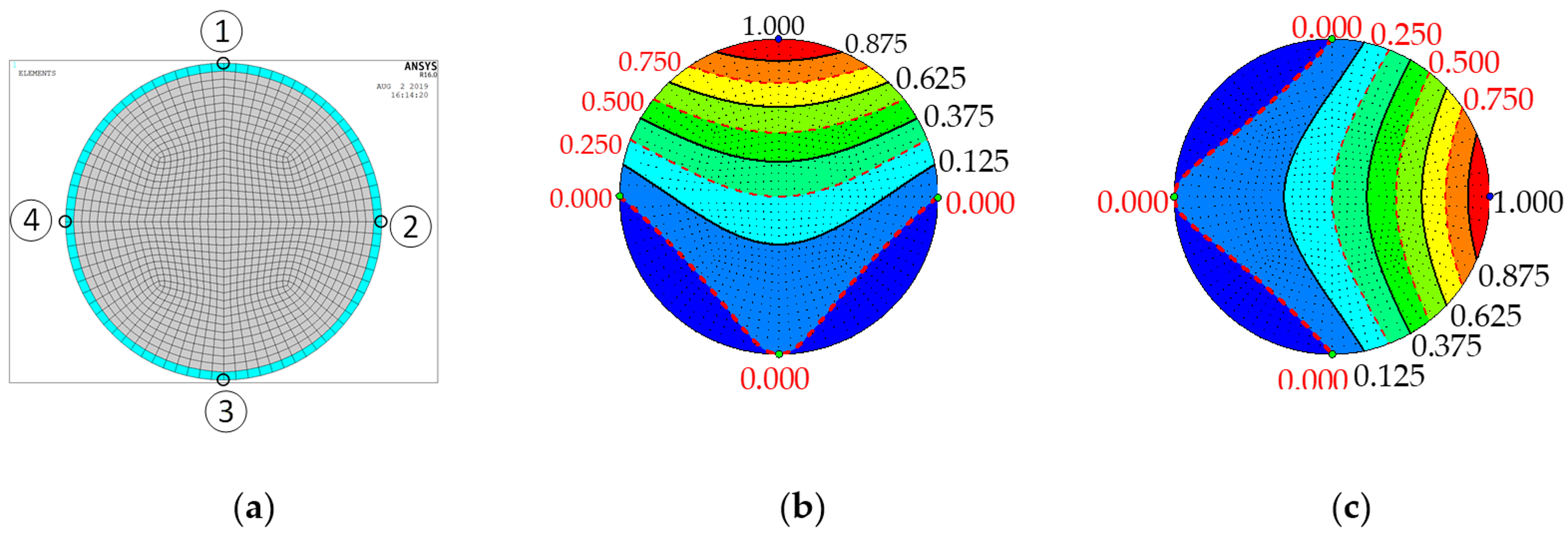
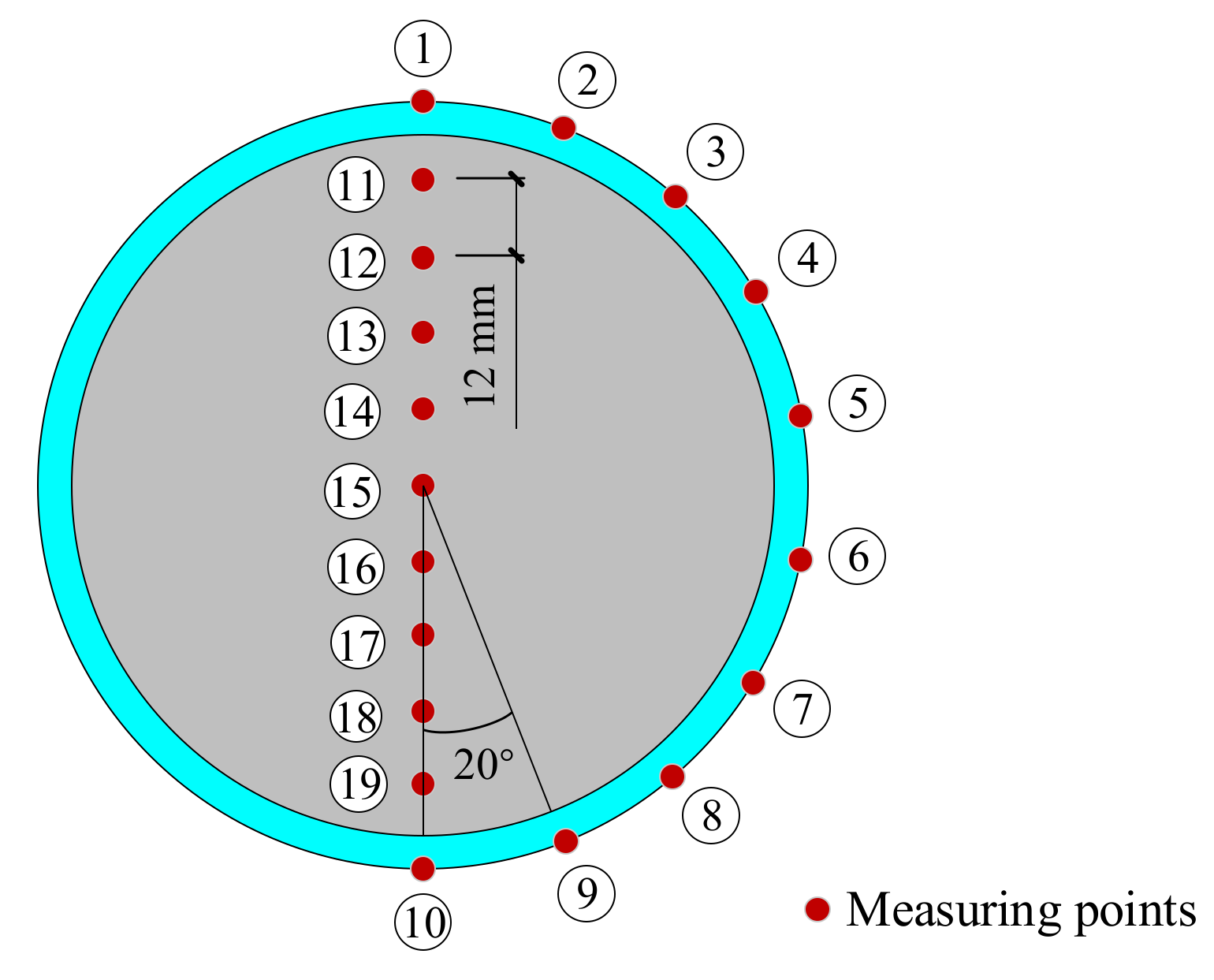
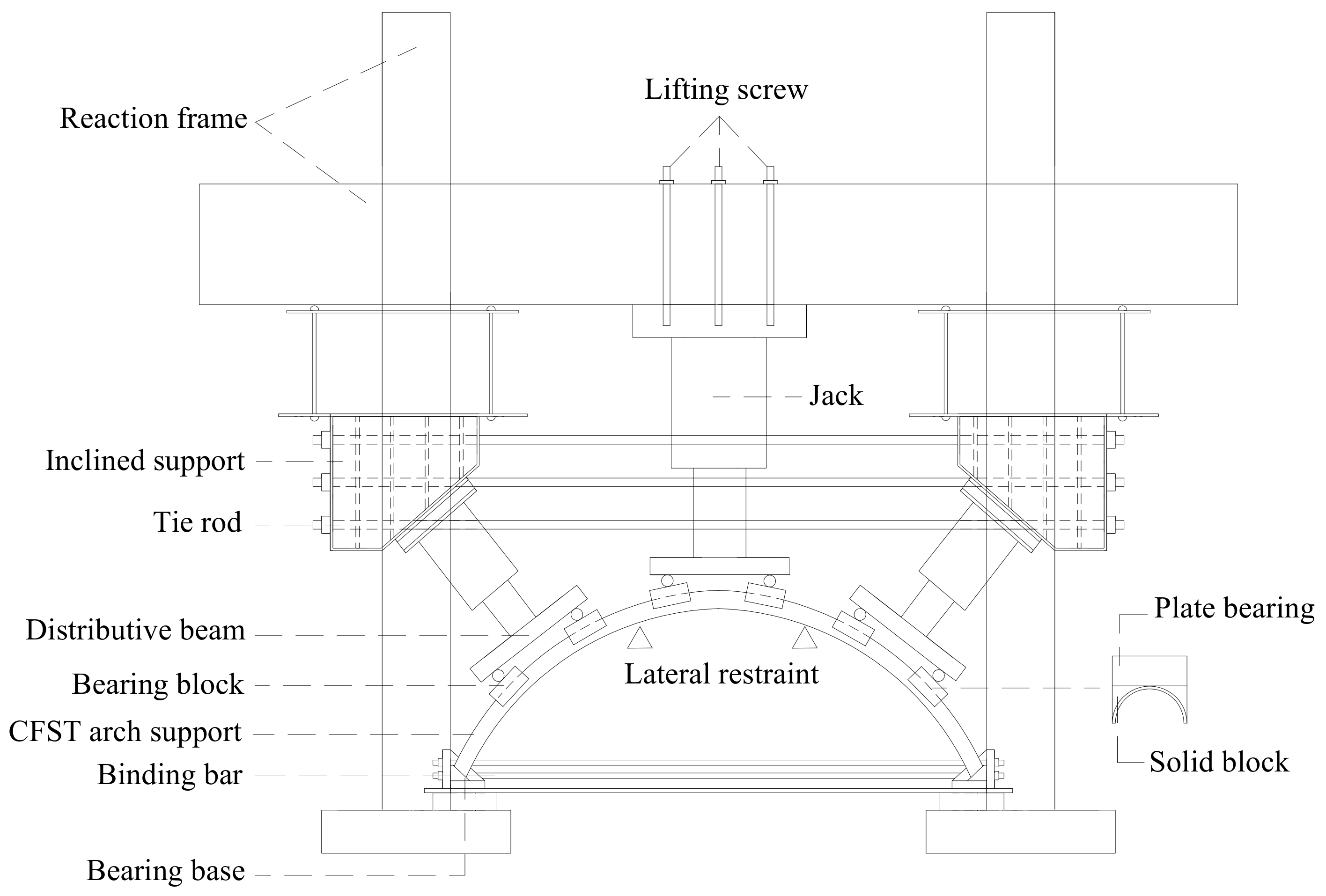

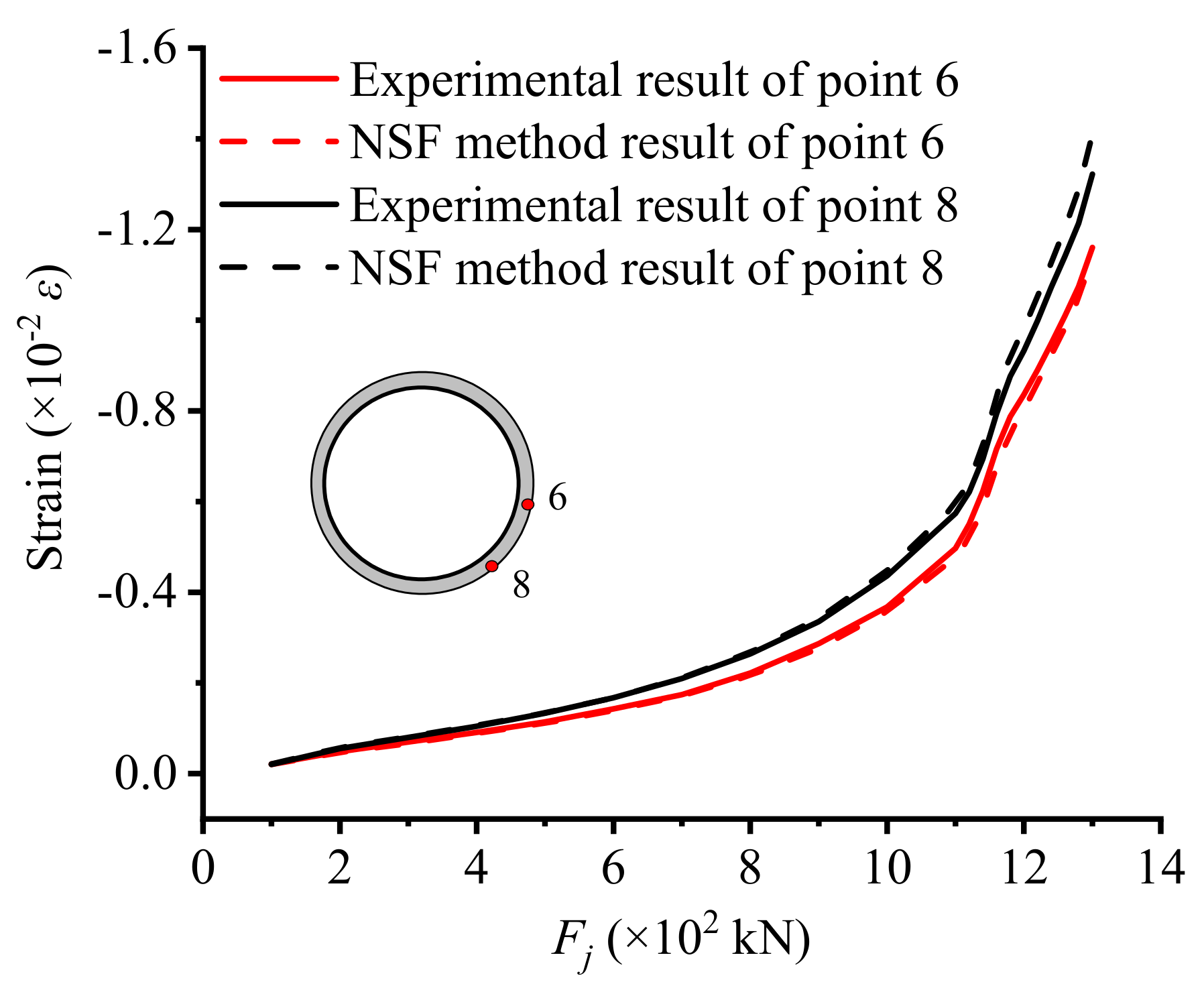
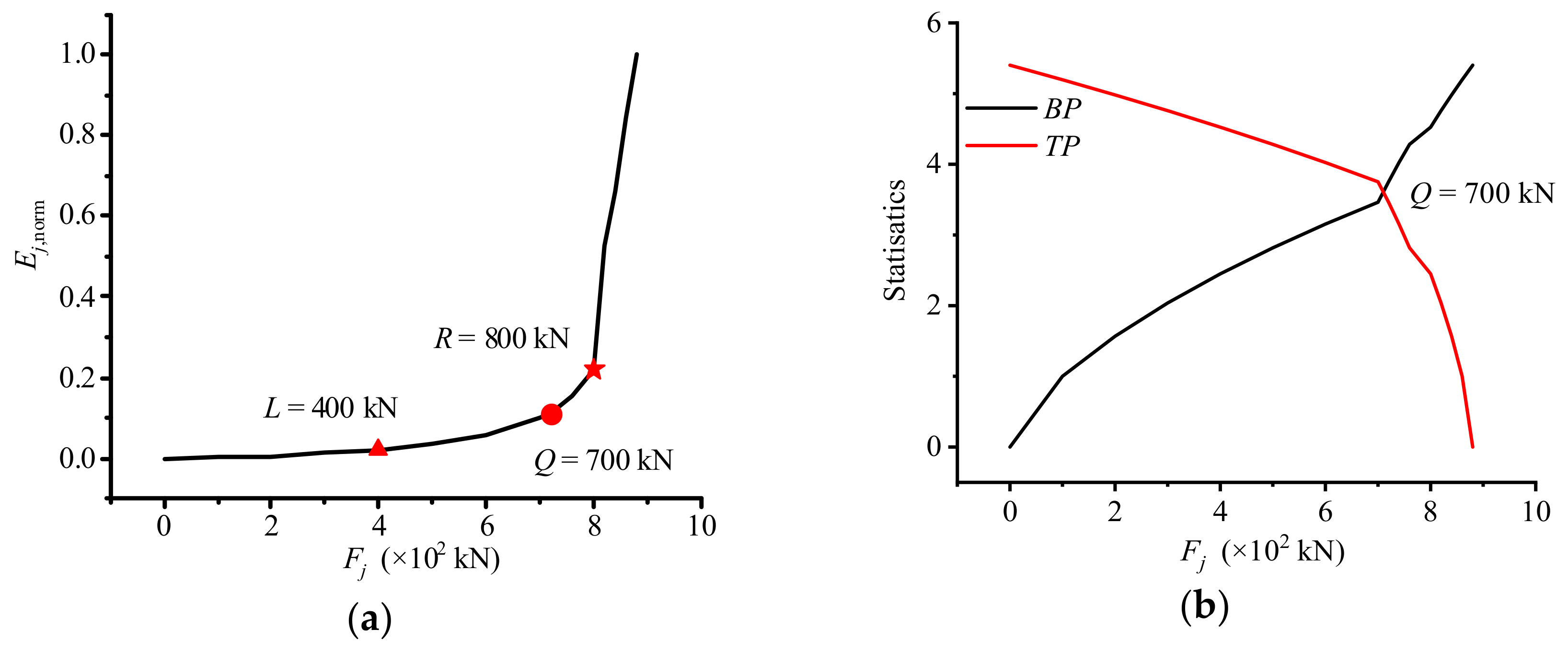
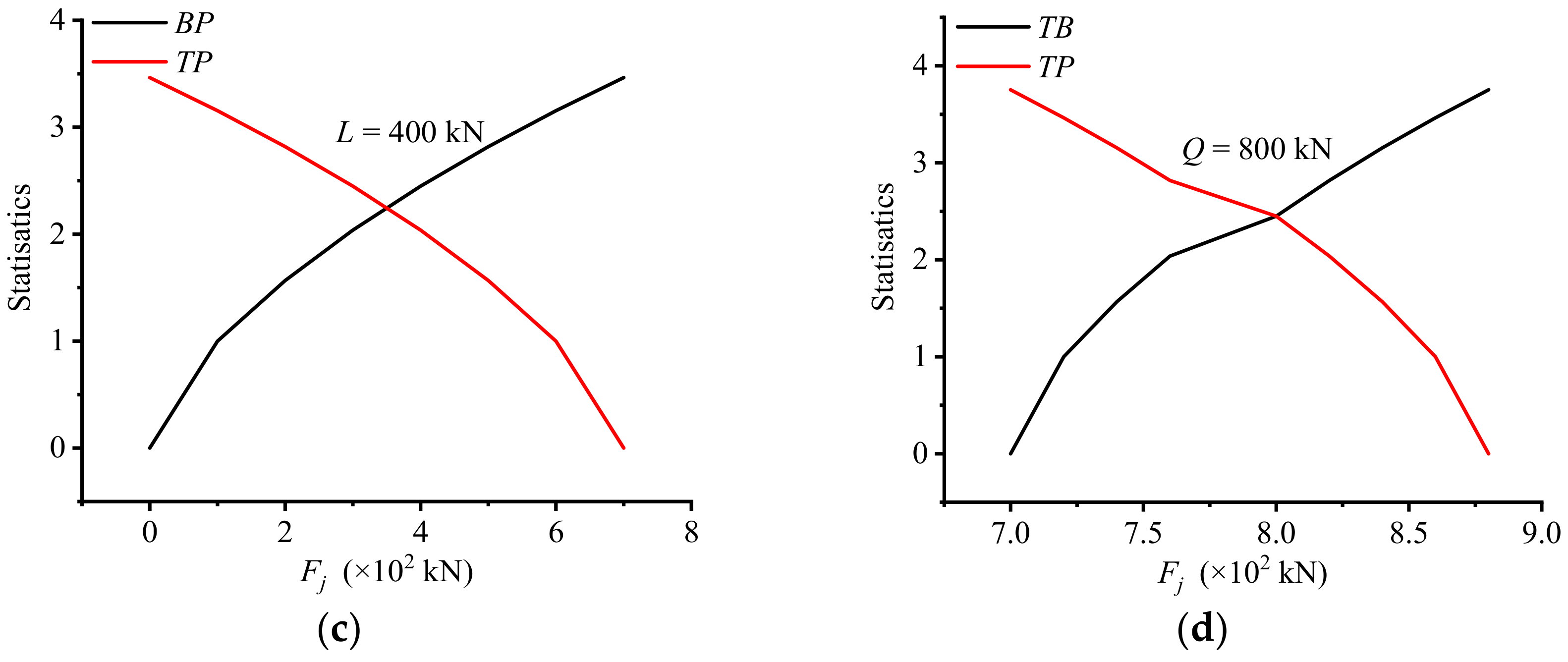
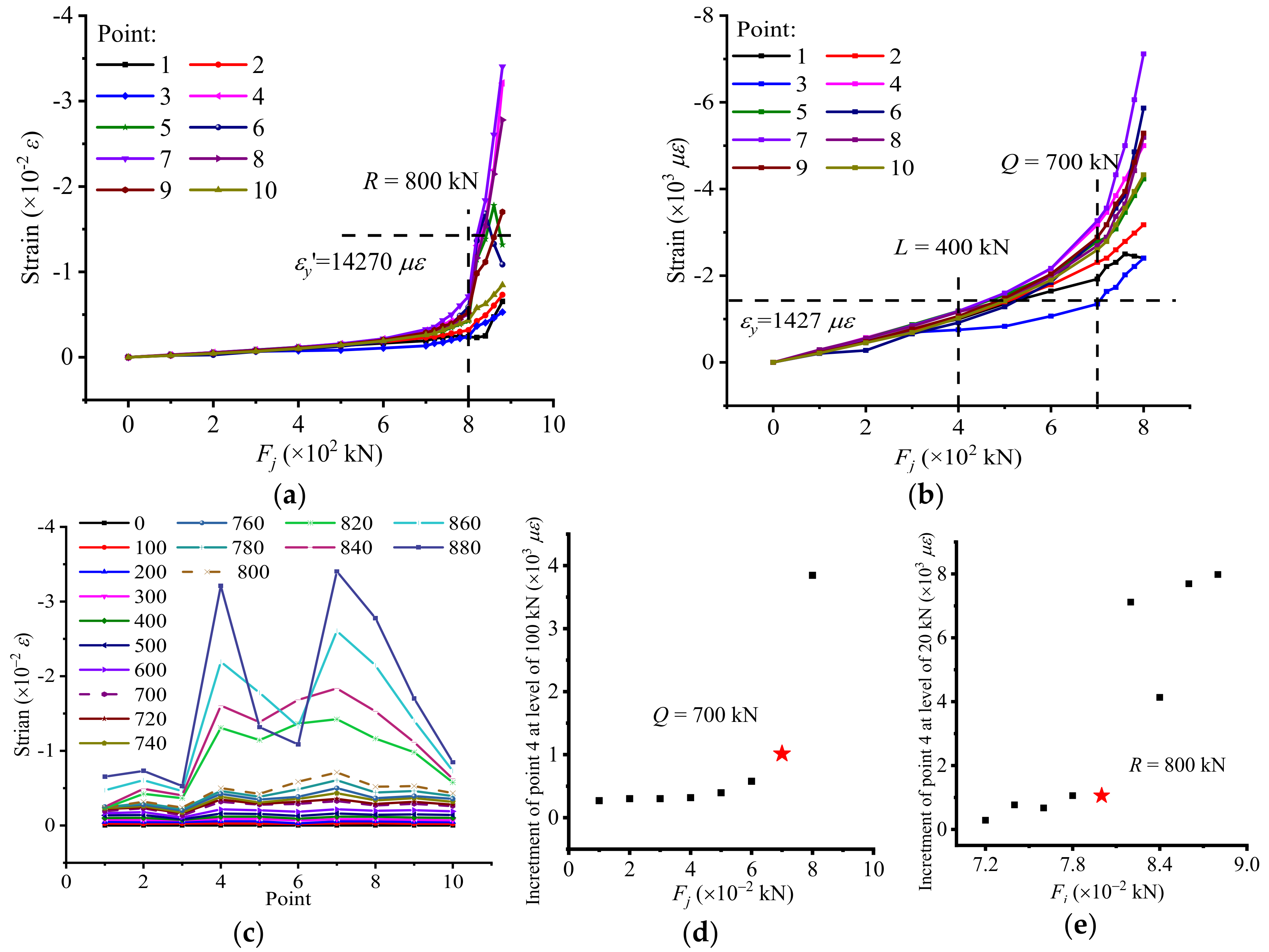
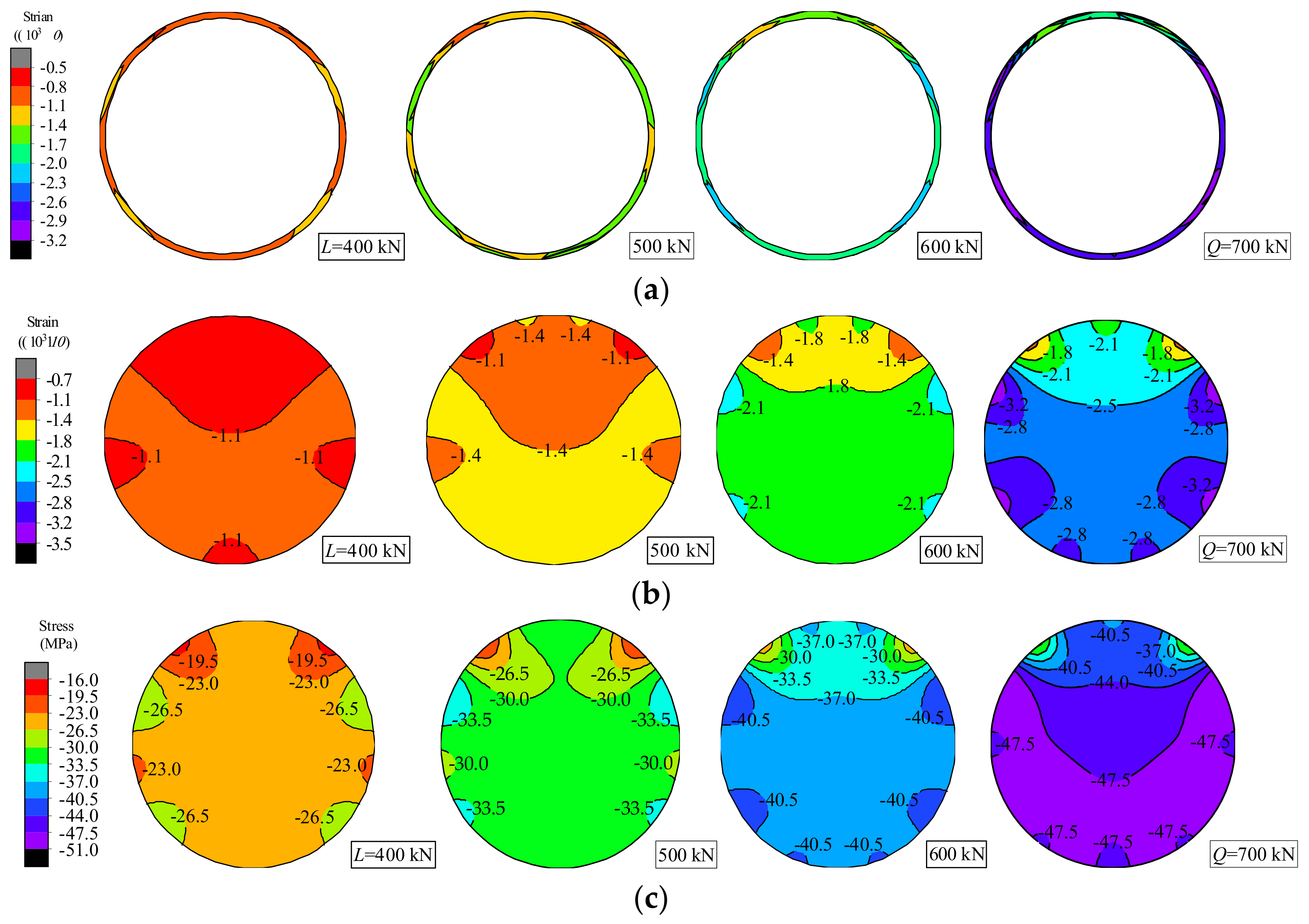
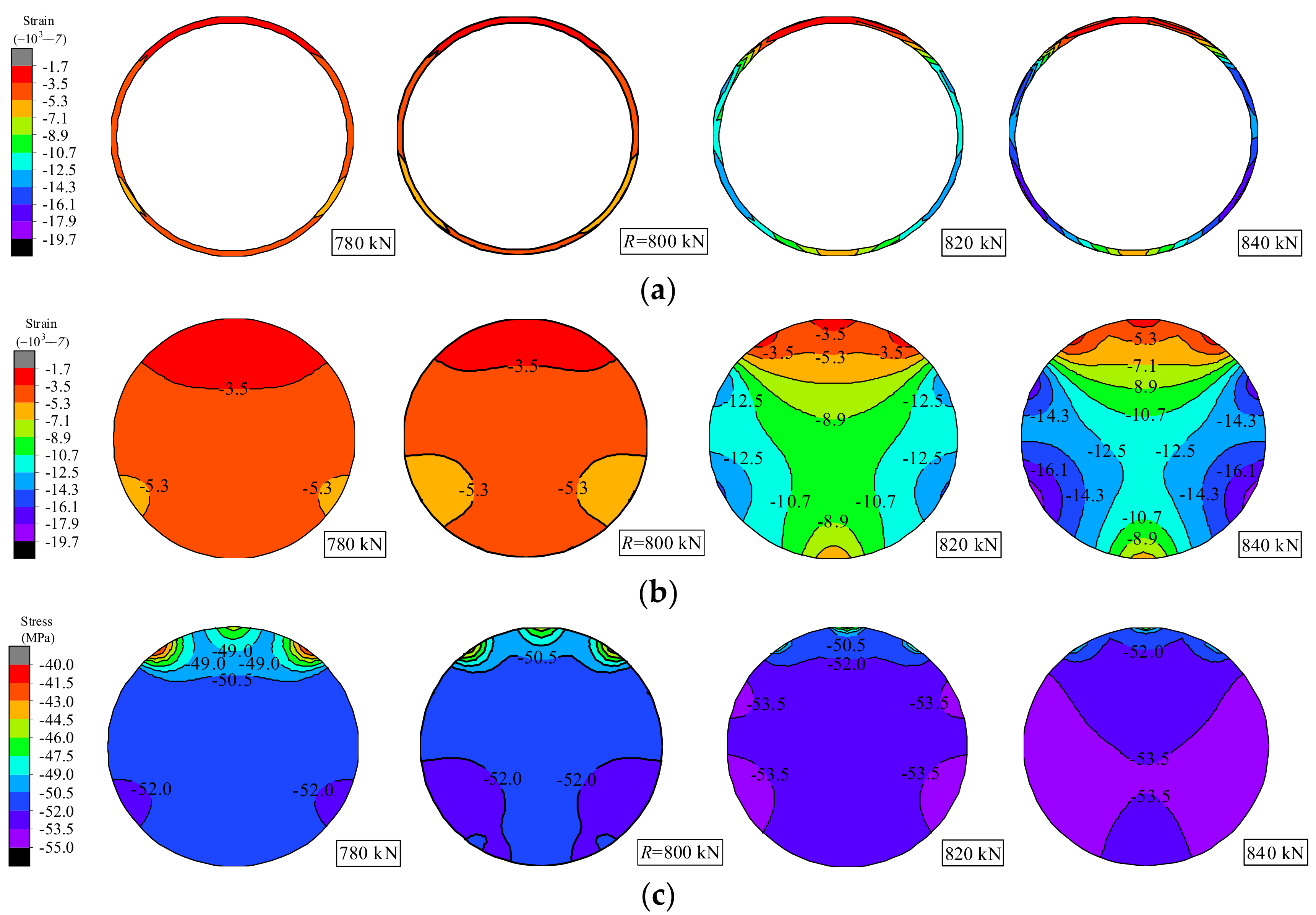
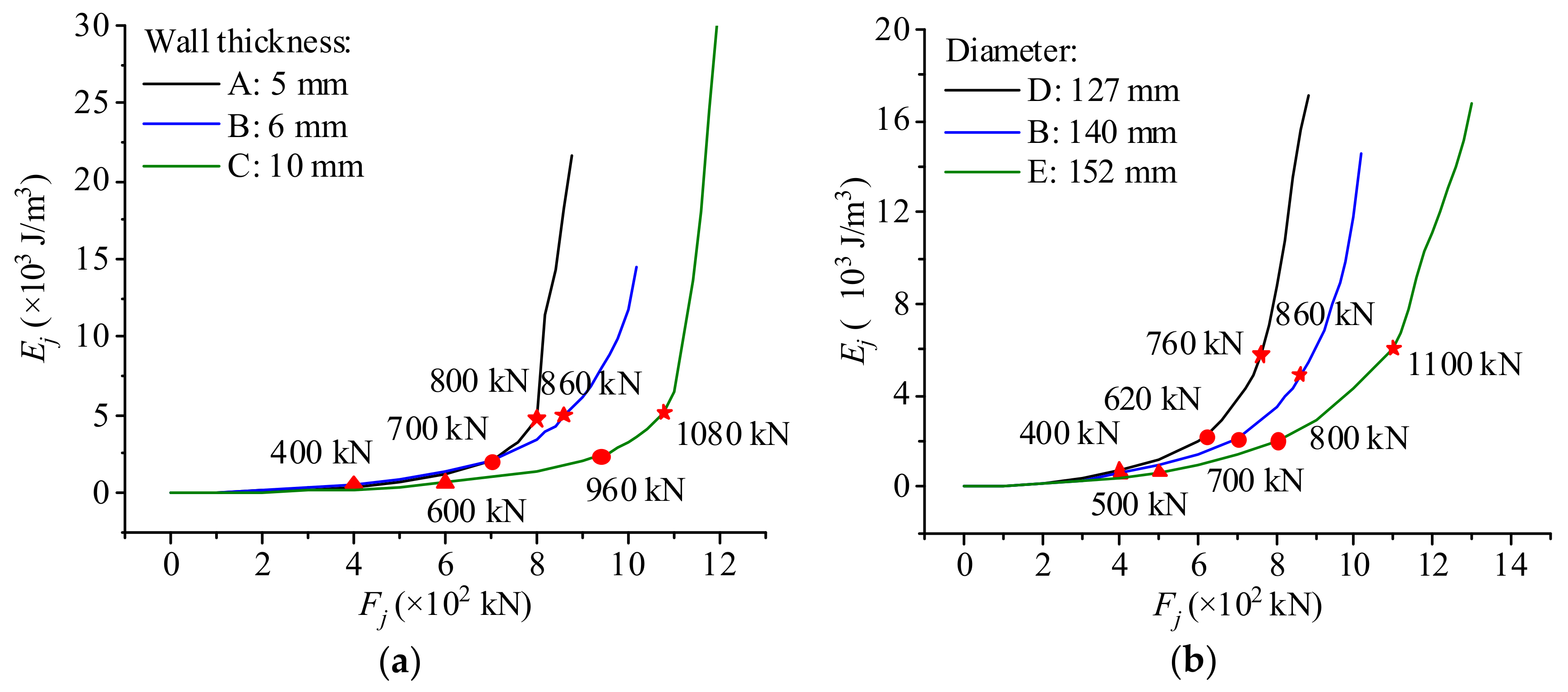
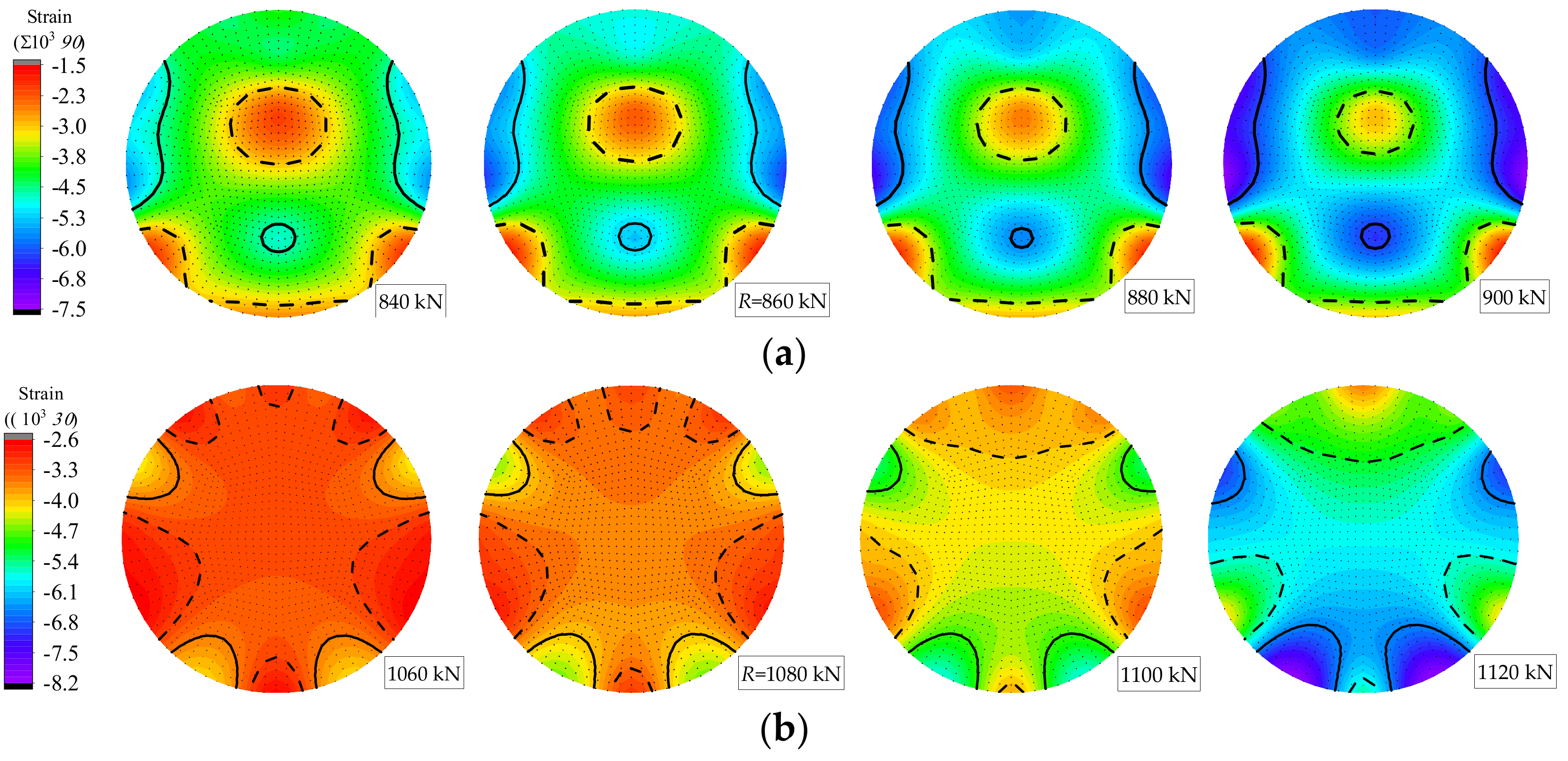
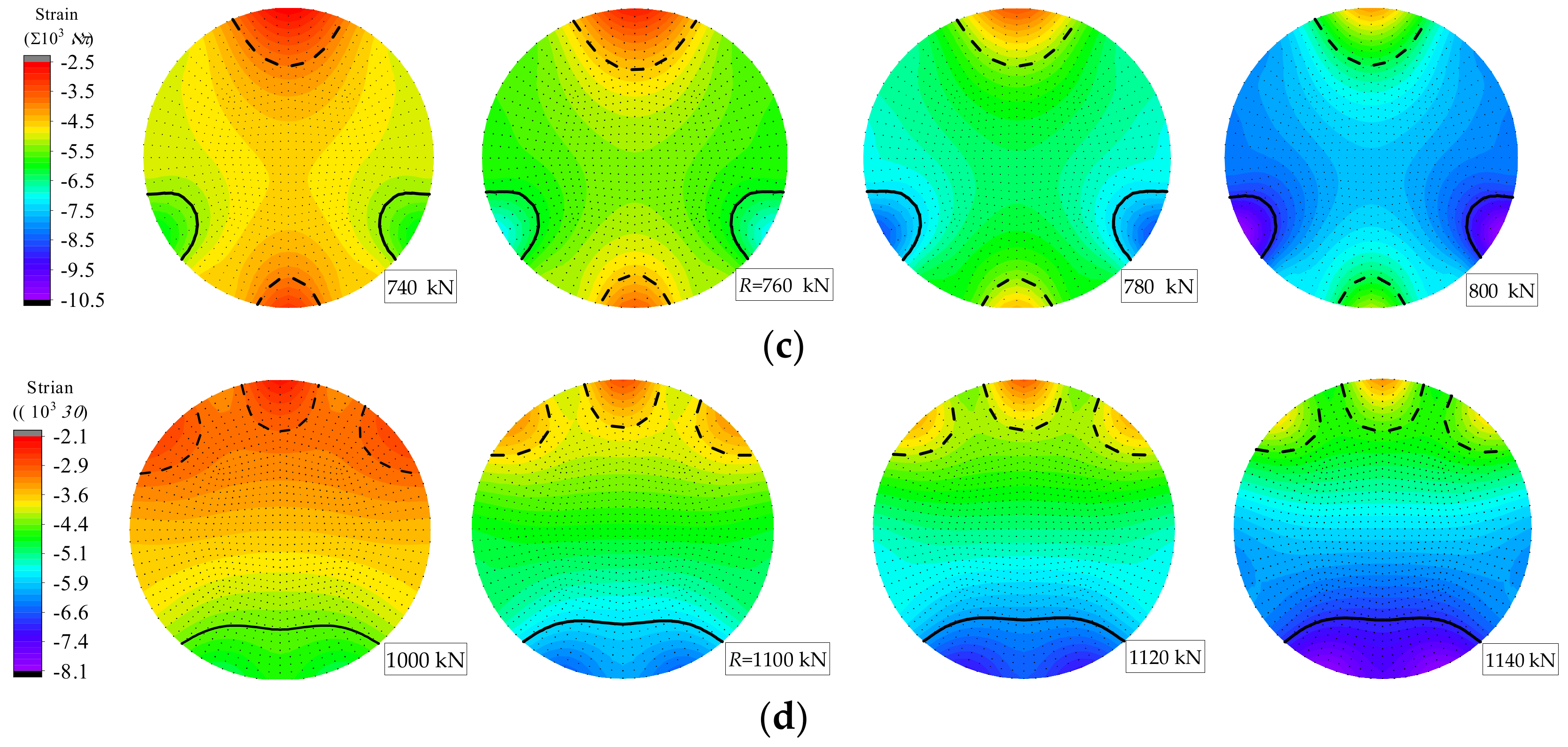
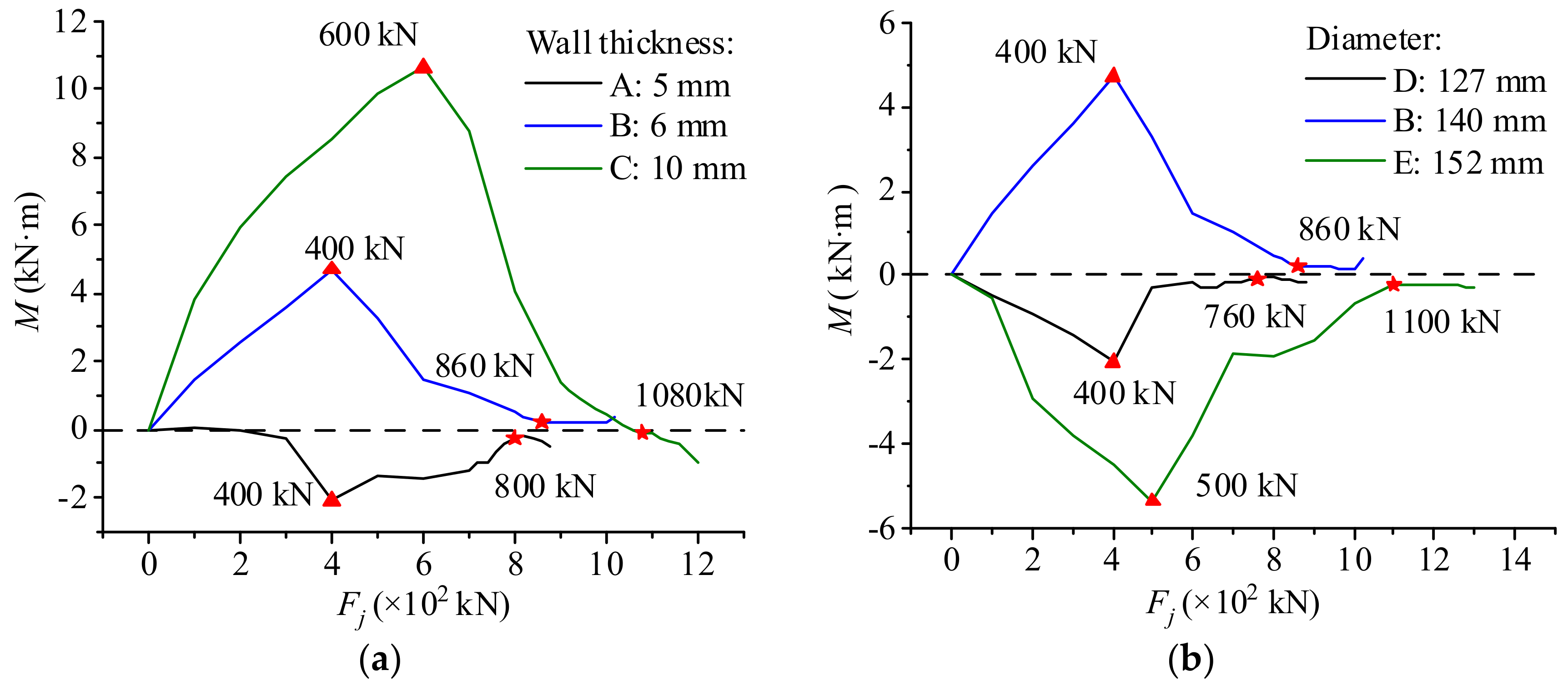
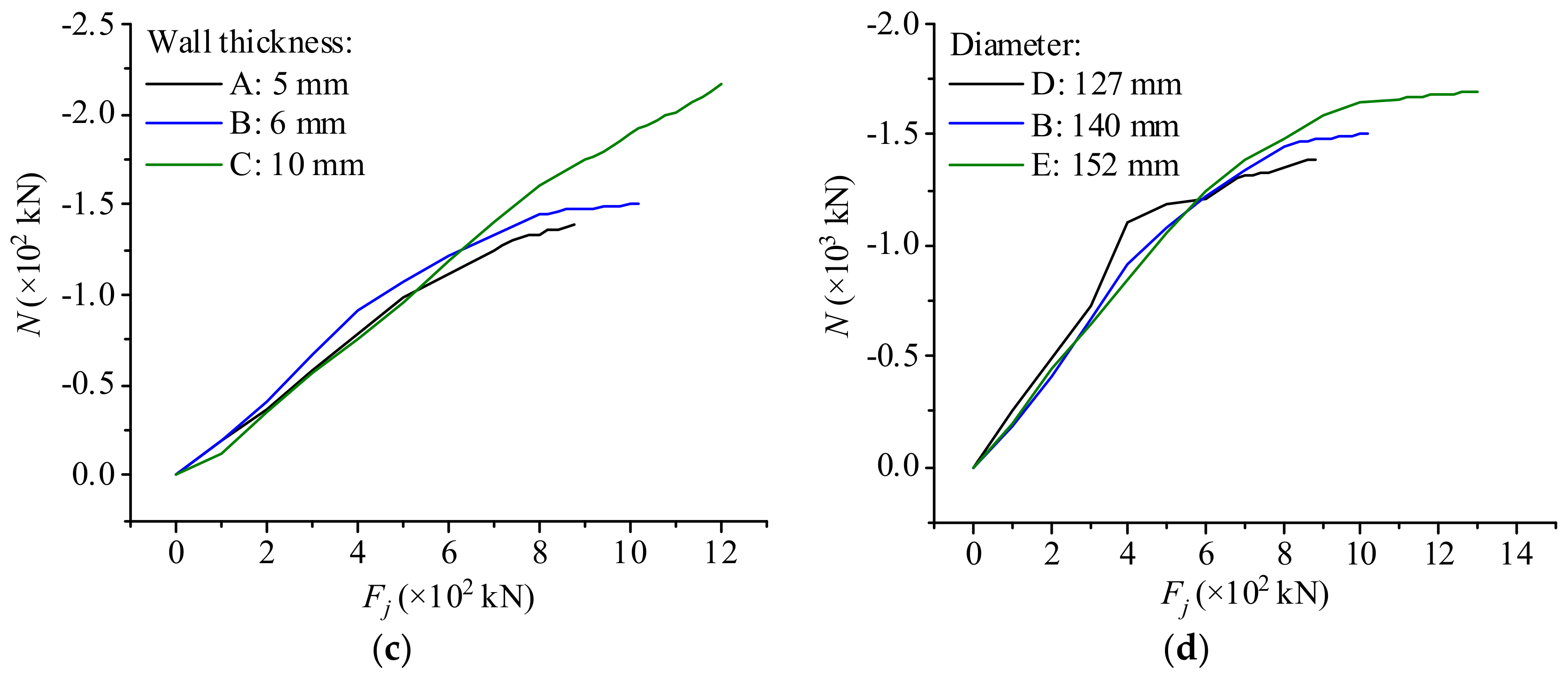
© 2019 by the authors. Licensee MDPI, Basel, Switzerland. This article is an open access article distributed under the terms and conditions of the Creative Commons Attribution (CC BY) license (http://creativecommons.org/licenses/by/4.0/).
Share and Cite
Shen, J.; Huang, W.; Yang, X.; Shi, J.; Zheng, K. Stressing State Analysis of CFST Arch Supports in Deep Roadway Based on NSF Method. Appl. Sci. 2019, 9, 4238. https://doi.org/10.3390/app9204238
Shen J, Huang W, Yang X, Shi J, Zheng K. Stressing State Analysis of CFST Arch Supports in Deep Roadway Based on NSF Method. Applied Sciences. 2019; 9(20):4238. https://doi.org/10.3390/app9204238
Chicago/Turabian StyleShen, Jiyang, Wen Huang, Xiaocong Yang, Jun Shi, and Kaikai Zheng. 2019. "Stressing State Analysis of CFST Arch Supports in Deep Roadway Based on NSF Method" Applied Sciences 9, no. 20: 4238. https://doi.org/10.3390/app9204238
APA StyleShen, J., Huang, W., Yang, X., Shi, J., & Zheng, K. (2019). Stressing State Analysis of CFST Arch Supports in Deep Roadway Based on NSF Method. Applied Sciences, 9(20), 4238. https://doi.org/10.3390/app9204238



